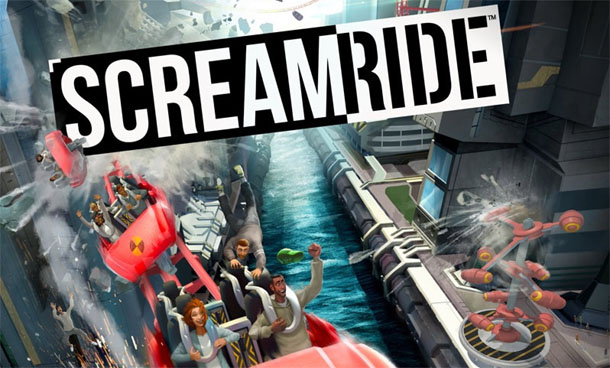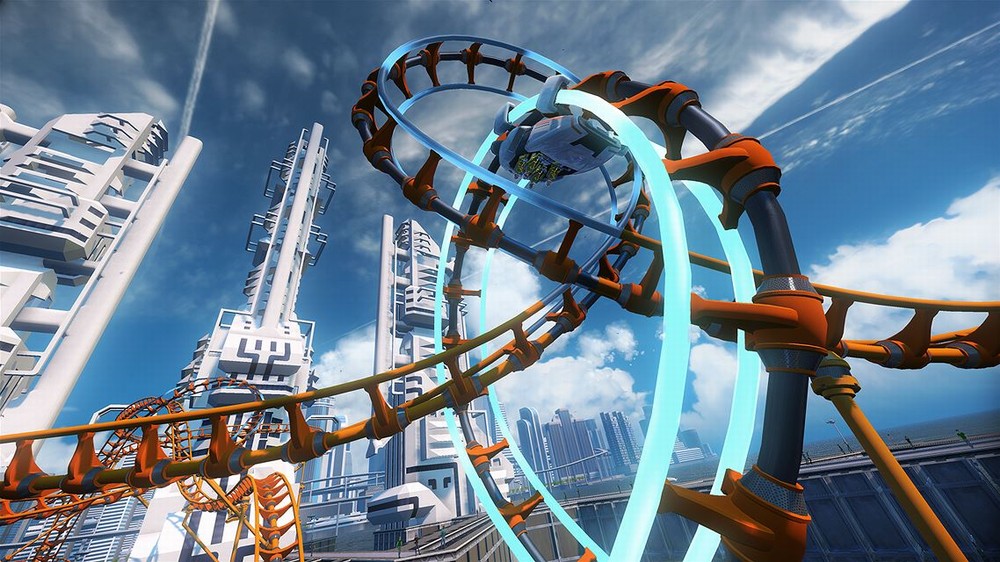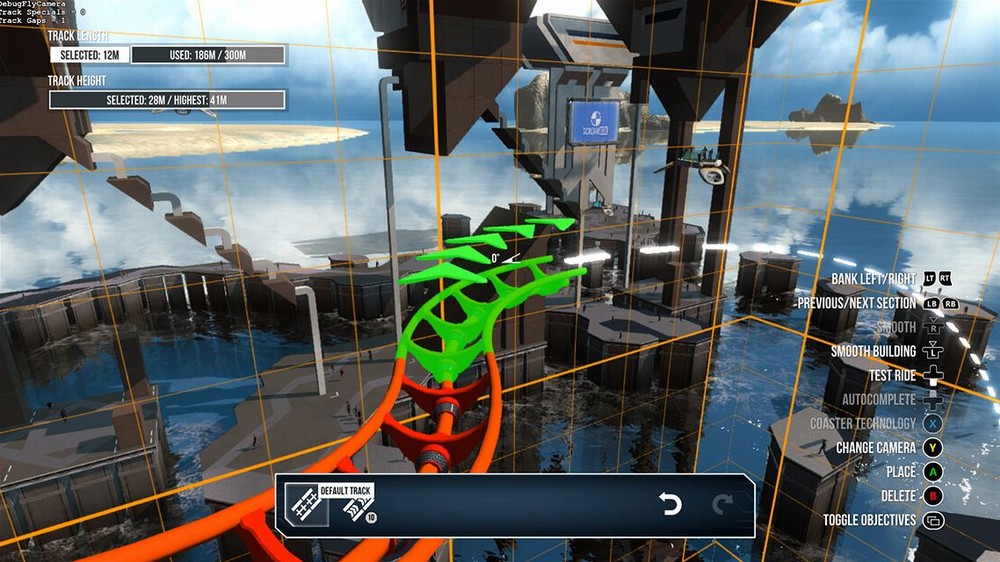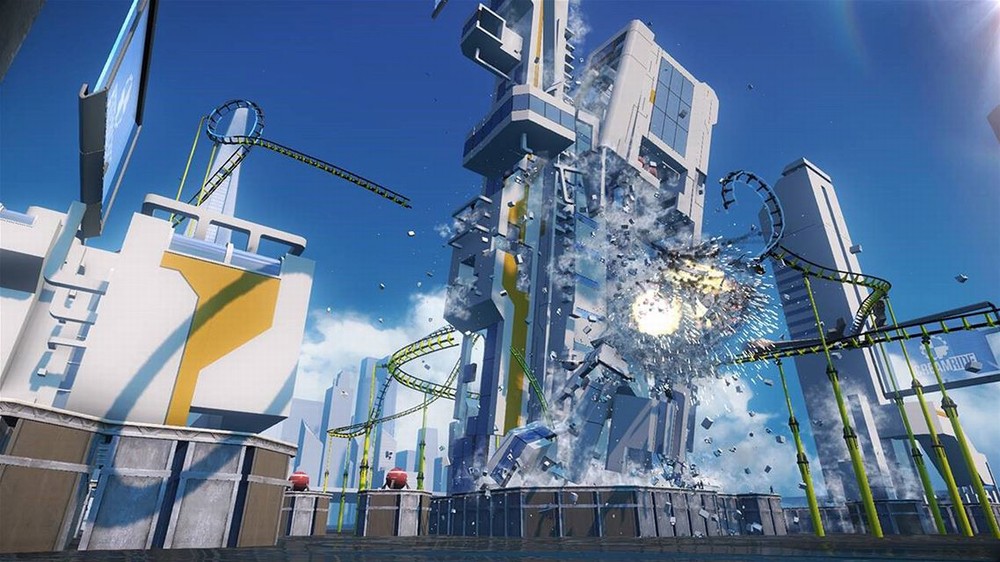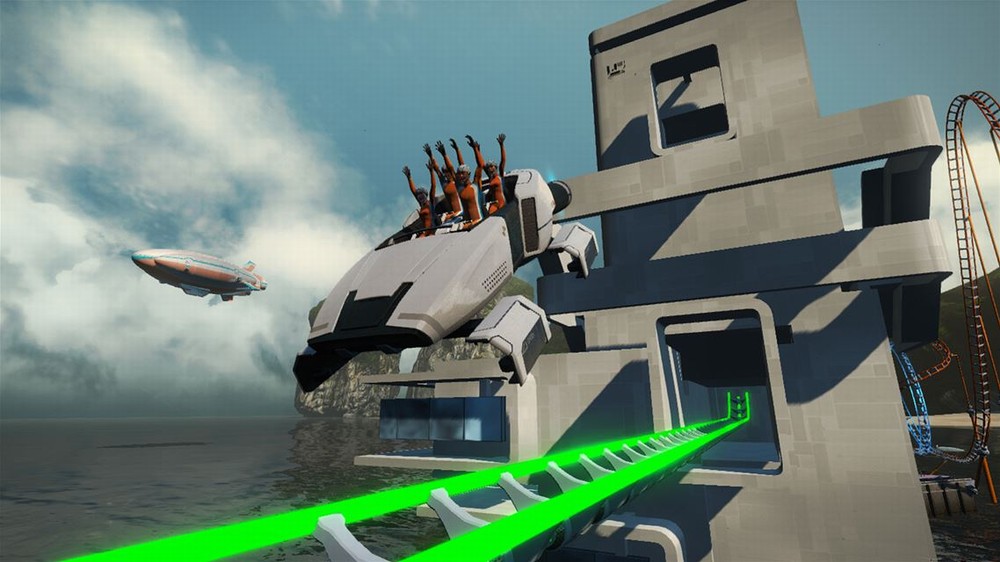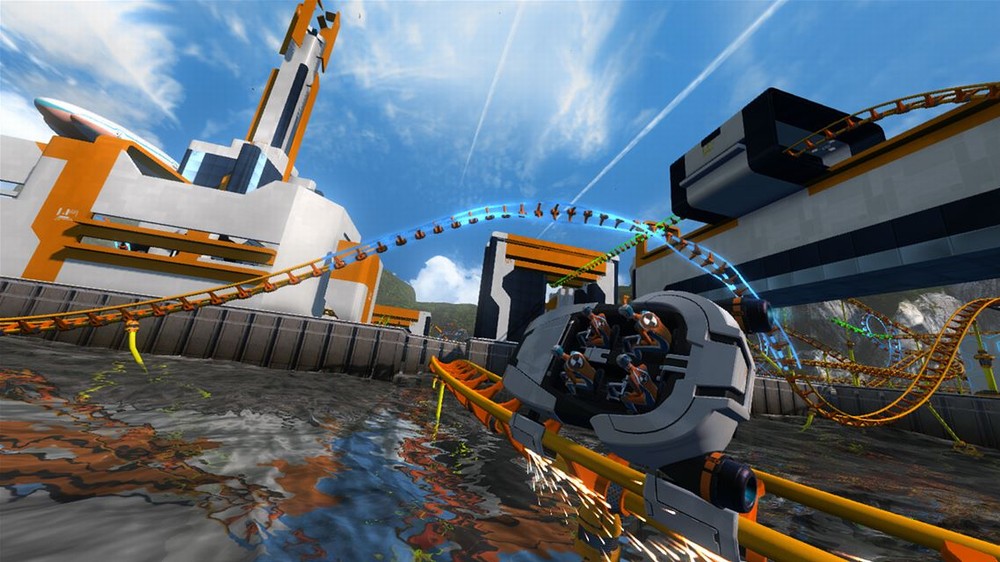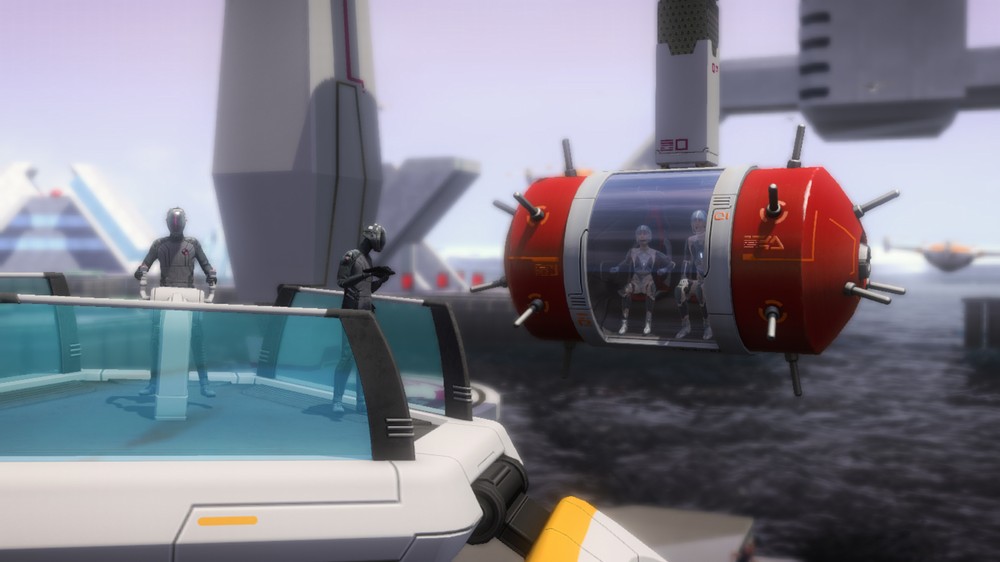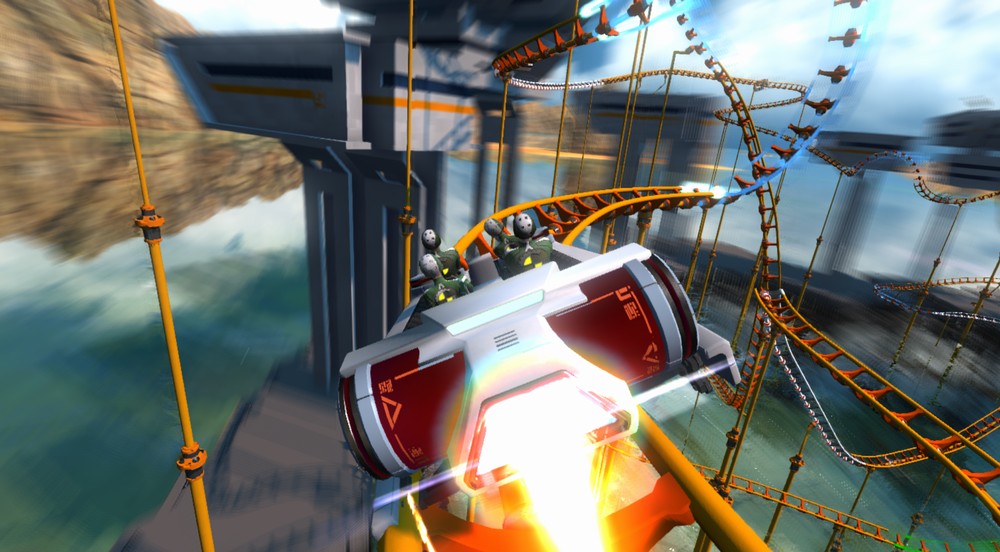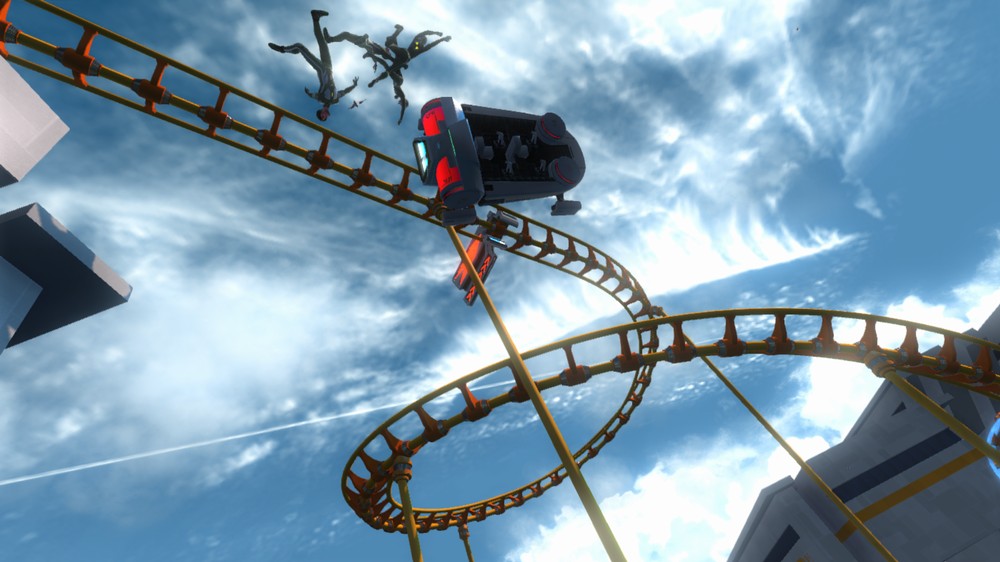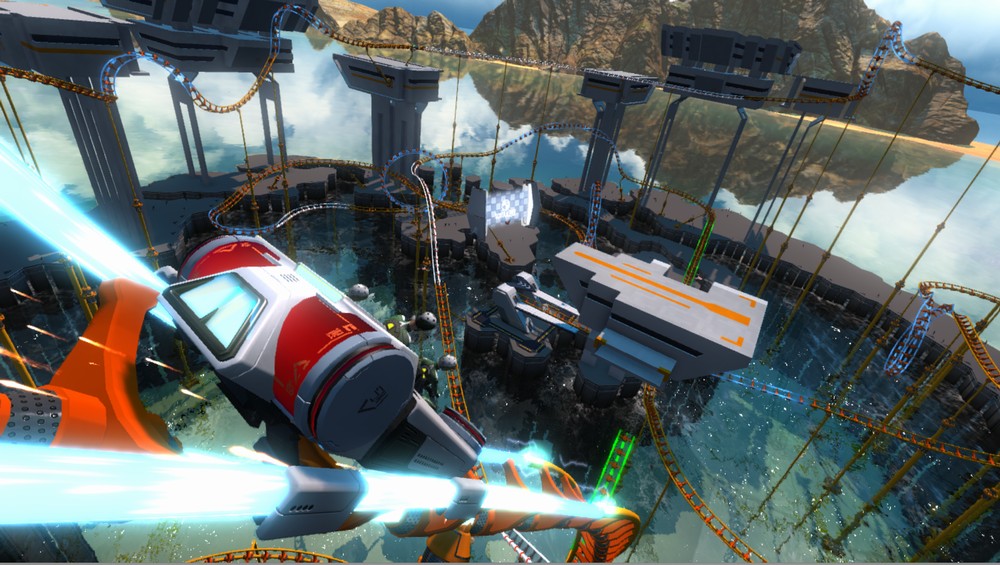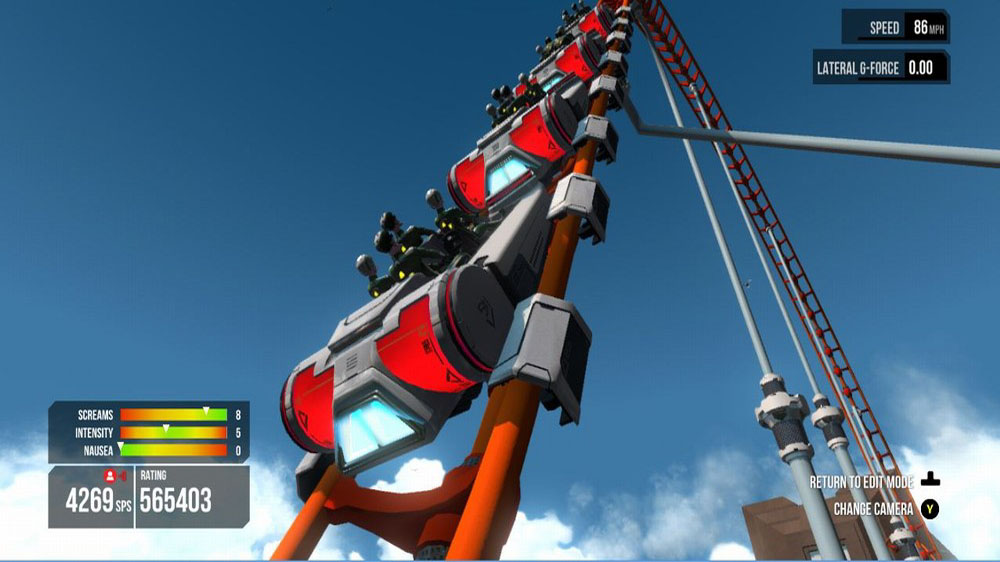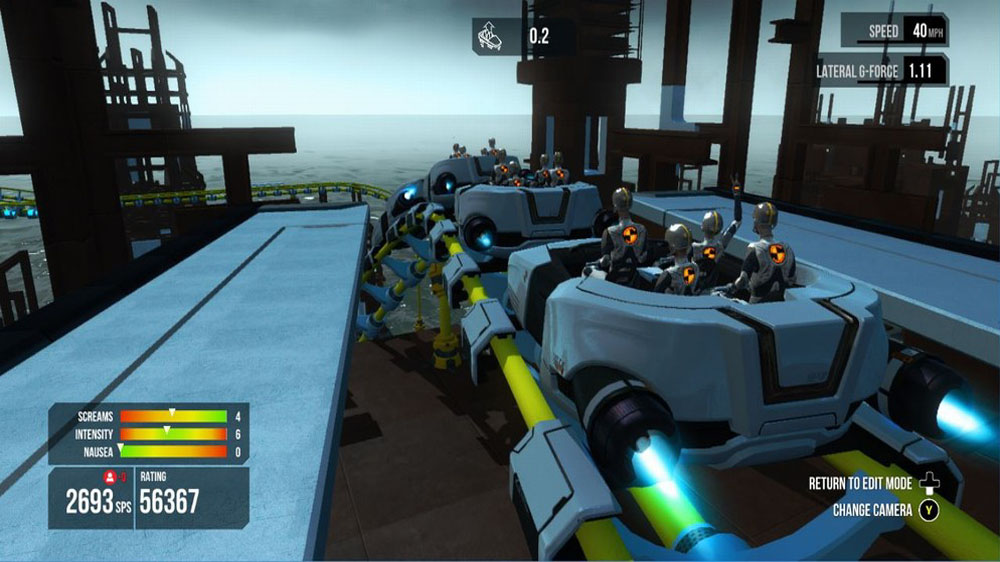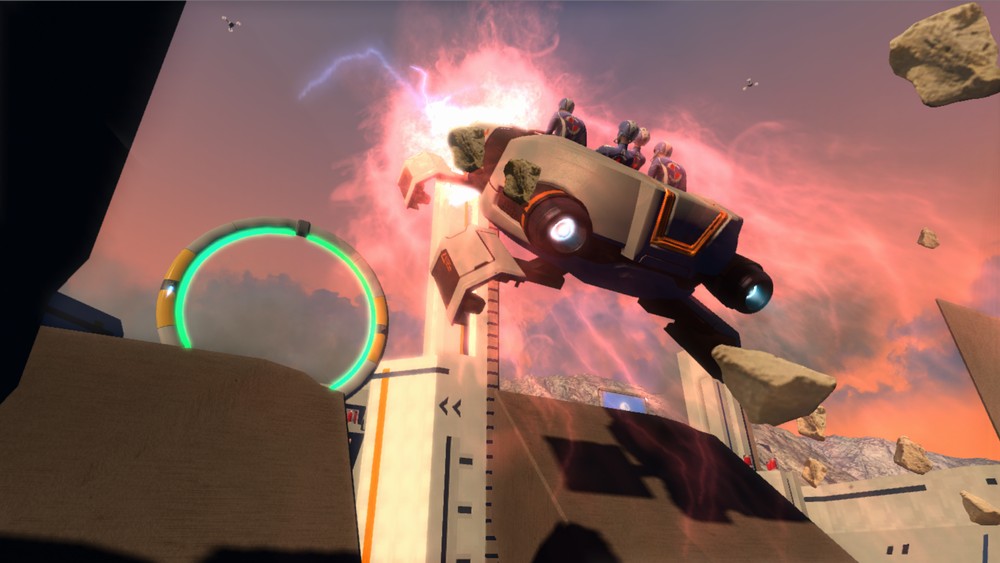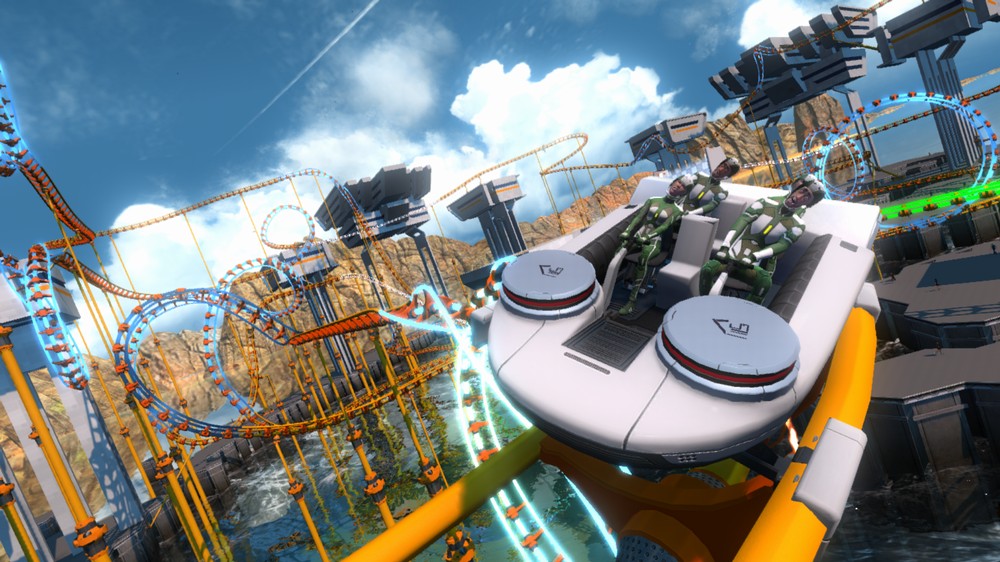Frontier Developments is no stranger to rollercoasters or build/management sims. Known for games like Rollercoaster Tycoon, Thrillville, and most recently, Zoo Tycoon for the Xbox One, Frontier is ready to put their unique spin on this niche genre with ScreamRide, a new build and destroy action/sim available exclusively for the Xbox One and Xbox 360.
ScreamRide is set in the distant future where society has become so jaded with virtual stimulation that they crave something more. Enter ScreamWorks, a giant company with an international research facility built offshore on manmade islands dedicated to one core vision – to make you scream. The game opens with a fresh batch of recruits, all wearing the latest in crash test dummy jumpsuits being transported to ScreamWorks where they are about to become test subjects in a battery of tests and trials involving insane rollercoaster rides and human wrecking ball demolition.
ScreamRide takes place in six unique locations spread across the map, each with their own environmental and artistic themes. You’ll learn the basics at Populous Labs before moving on to the tropical settings of Falls Research. Then it’s off to Beldurraren Laku, aka The Lake of Fire since your tests are all confined to the molten belly of a semi-active volcano. The landscape is dotted with a variety of craters (some man-made) at the Caldera Complex, and the frozen tundra of De Frusna adds plenty of chills to the thrills, but it all comes down to the final test in The Fortress situated amongst some post-apocalyptic ruins.
Your mission is three-fold. First up is ScreamRider where you control the cars on a rollercoaster to achieve the maximum thrills possible. In this mode you have control over acceleration, braking, and the collection and deployment of turbo boost. Each coaster has various score objectives as well as a list of secondary goals. You’ll need top scream scores and completion of all secondary objectives to earn that coveted gold medal for each mission. Mastering the speed of each coaster as well as learning just how to balance the cars on two wheels as you careen around curves at top speed is only the beginning. The laundry list of secondary objectives is where the real fun lies with insane goals like launching your coaster from the rails and turbo-thrusting through a building to send it crashing down into rubble.
This leads right into Demolition mode where you will launch riders in a variety of human-sized wrecking balls called “cabins” or send coaster cars sailing into target-rich environments. Cabins are launched from a trebuchet-like catapult that spins around at a speed you can control. When ready you hold down the launch button to go into slow-motion and reveal the exit-trajectory line then release the button to launch your research subjects at their target. While achieving a certain level of destruction is always the primary goal, it’s all those fun secondary objectives like hitting bull’s-eyes, or perfectly arcing the cabin through suspended rings or bouncing off of trampolines that become the more rewarding challenges. The real payoff comes in the fantastic modeling of the skyscrapers and other architecture than comes crashing down in thrilling slow-motion chain reactions. The level of geometry and detail combined with a physics engine that screams “chaos theory” means that no two cabin or coaster launches will ever yield the same results, even if you somehow manage to strike the exact same point of impact.
Last up is the Engineer mode where you are given an incomplete rollercoaster and asked to complete the design with a set amount of track as well as achieve a certain level of screams as you Build to Thrill or Build to Destroy. These challenges are more puzzle-like in that you have a set amount of track and a limited assortment of technology pieces as dictated by your current Engineer Security Clearance that slowly ranks up as you play other game modes. When designing and building your custom coasters you’ll need to factor in Scream, Intensity, and Nausea levels, which are shown in real-time meters when you launch your riders. Drop, duck, and airtime (negative G) variables also factor into your final score as does the use of specialty track pieces. Unlike the ScreamRide mode, you do not have real-time control over the speed of your coaster, so you will need to include your own booster and brake sections or rely on good old-fashioned gravity and physics to keep your riders in the car and your car on the track.
There are hours and hours of addictive fun waiting in the career section of ScreamRide, but the truly unlimited potential of the game is only realized when you venture into the Editor. This is where you can create your own custom content that can be shared with others over Xbox Live. Additionally, you can download and experience custom creations designed by other gamers. Imagination is truly the only limit to the quality and amount of content ScreamRide has to offer. The powerful yet intuitive editor allows you to create the coaster of your dreams, and then enhance that creation with all sorts of scenery and props. Each structure can be built with up to 4,000 individual pieces and your entire world can hold up to 50,000 pieces.
While ScreamRide is available on both Xbox One and Xbox 360, only Xbox One offers the Level Center, a social community hub where you can find and download ready-to-play levels, or blueprints for individual building components that can be used in your own sandbox creations. You can filter your searches by content type or check for user ratings to find the best of the best.
ScreamRide isn’t pushing any graphical limits on the Xbox One, and while I haven’t seen the game on the Xbox 360 I can’t believe it looks much better on the newer console. By design, the very nature of the graphics are simplistic as would be expected with any game that is being constructed from uniform building blocks and predetermined props and set pieces. At a glance I was reminded of Mirror’s Edge architecture, which is fine in ScreamRide where building are merely parts of the background, but in Demolition buildings take on a more prominent role in the gameplay. Sound design is basically a mix of TRON-inspired electronica in the menus that turns to screams and environmental sounds once in the game as well as an eerily familiar female computer voice that may or may not offer words of encouragement during and after each mission.
At its most basic level, ScreamRide reminded me of Trials Fusion; a game that offered up plenty of its own exciting content, but whose true staying power lies within its robust construction kit and the ability for thousands of gamers to share thousands of creations. The longer this game exists, the more content it will generate and the more impossible it will be to put down. Priced at only $40, ScreamRide has the potential to dominate as much of your time as any other major release in the foreseeable future. After all, who doesn’t love a great rollercoaster ride, and watching buildings explode, implode, and slowly sink to the ground never gets old nor do the panicked screams of your riders or the GLaDOS-inspired voice of the computer that runs it all. You’ll come for the screams, but you’ll stay for the ride.
Check out our first-look video coverage from our Populous Labs ScreamRide show on our YouTube channel.

